Ever wonder how Google seems to know exactly what’s on your website without poking around like a lost tourist? Well, the answer lies in something called sitemaps. They’re like a treasure map for search engines, helping them navigate through the vast jungle of your site with ease. Without a sitemap, your website could end up as a hidden gem buried too deep in the digital world for anyone to find.
Whether you’re a seasoned website owner or just starting out, understanding sitemaps can be a game changer for boosting your site’s visibility. In this article, OtopusWriters will dive deep into what sitemaps are, why they’re so important, and how you can create one that works wonders for your SEO. Let’s roll up our sleeves and get started!
What Is Sitemaps Meaning?
At its core, a sitemap is a file—typically written in XML format—that contains a comprehensive list of all the pages on your website. It’s much like a detailed blueprint or, better yet, a map designed specifically for search engines. Imagine trying to explore a new city without a map—you might find the main landmarks, but you could easily miss out on hidden gems tucked away in side streets. That’s exactly how search engines like Google, Bing, and others operate without a sitemap.
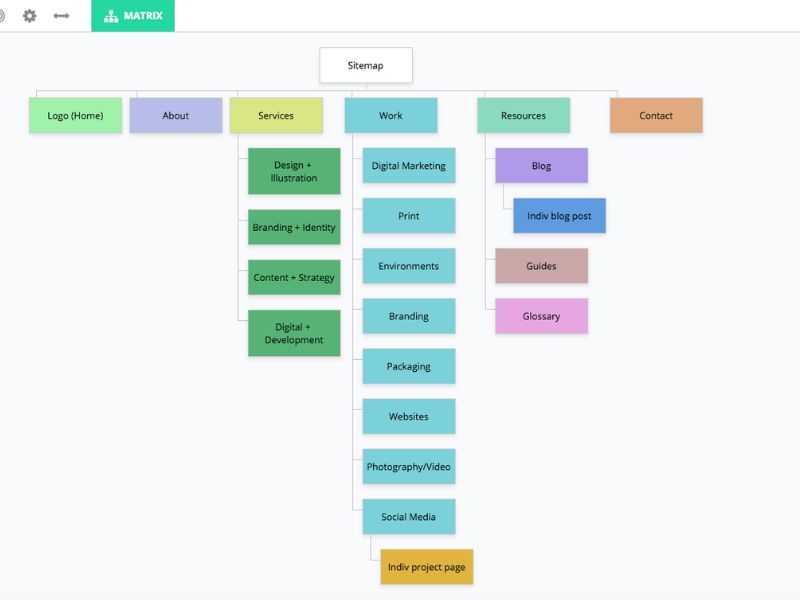
A sitemap serves as a guide, directing search engines through the maze of your website’s content. It provides essential information such as the structure of your site, the relationship between different pages, and the priority of each page. This is especially valuable for larger websites or those with complex structures, like e-commerce sites or blogs with hundreds of posts. Without a sitemap, search engines might overlook some of your important pages, particularly if they’re not well-linked or buried deep within the site’s hierarchy.
One of the main benefits of having a sitemap is that it ensures every significant page gets indexed. Search engines will be able to crawl your site more efficiently, even discovering content that isn’t immediately obvious from links alone. Whether it’s a new blog post, a product page, or a time-sensitive landing page, a sitemap makes sure everything is on the radar. This is especially crucial for pages that aren’t linked through your main navigation or may otherwise be difficult to find.
Sitemap vs. Navigation
While both a sitemap and website navigation play crucial roles in how a site is structured, they serve entirely different purposes. The navigation is the user-facing part of a website, typically located in the header. In many cases, simplified navigation links can also be found in the footer or sidebar, allowing visitors to easily explore key pages and understand what the website offers. This helps create a seamless browsing experience for users.
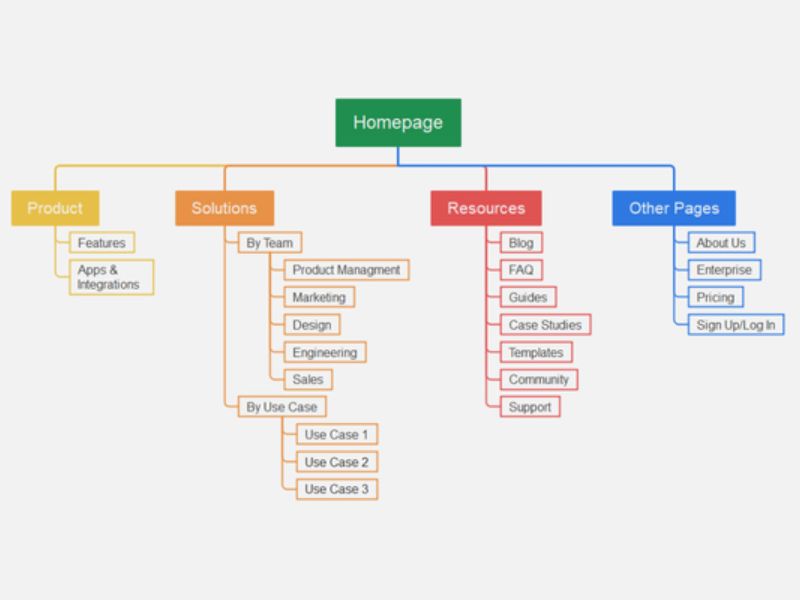
On the other hand, a sitemap is an XML file that outlines the full structure of the website, intended specifically for search engines. Unlike navigation, which helps users move around a site, sitemaps guide search engines by providing them with a comprehensive map of the site’s URLs. This ensures that search engines can crawl and index all pages effectively, even those that may not be easily found through regular navigation links.
Although visitors can technically access the sitemap if they know the correct URL (often stored at the root of a website, such as https://[domainname]/sitemap.xml), it’s not designed for user interaction. The sitemap exists to help search engines, ensuring that every page, no matter how deeply buried, is properly indexed. While navigation helps users find their way around a site, sitemaps are there to assist search engines in understanding the site’s complete structure.
Structure of an XML Sitemap
An XML sitemap provides a standardized format that makes it easier for search engines to discover and index the pages of a website. It essentially lists all the important URLs of a website in a structured manner. Below is an example of a basic XML sitemap containing a single URL:
| Code |
| <?xml version=”1.0″ encoding=”UTF-8″?> |
| <urlset xmlns=”http://www.sitemaps.org/schemas/sitemap/0.9″> |
| <url> |
| <loc>https://www.yoast.com/wordpress-seo/</loc> |
| <lastmod>2024-01-01</lastmod> |
| </url> |
| </urlset> |
The above code breaks down into several key elements:
- XML Version Declaration: This line, <?xml version=”1.0″ encoding=”UTF-8″?>, tells search engines the type of file they are reading, confirming it is in XML format.
- URL Set: The <urlset> tag signals to search engines that the file contains URLs, adhering to the sitemap protocol.
- URL: Within the <url> tag, the <loc> tag lists the exact URL of the page that you want search engines to discover and index.
- Lastmod: The <lastmod> tag shows the last time this page was updated, providing search engines with a date in the format YYYY-MM-DD.
All XML sitemaps must follow this standardized structure to be considered valid. Other optional properties, such as <priority> and <changefreq>, can also be included, but they do not directly impact the sitemap’s effectiveness or search engine performance. This structured approach ensures that search engines can efficiently crawl and index the most important pages of your site.
The Role of the <lastmod> Tag in Sitemaps
The <lastmod> tag plays a vital role in sitemaps, as it provides search engines like Google and Bing with key information about when a page was last updated. Both search engine giants have highlighted the significance of this feature, emphasizing its usefulness in determining how often a page should be crawled.
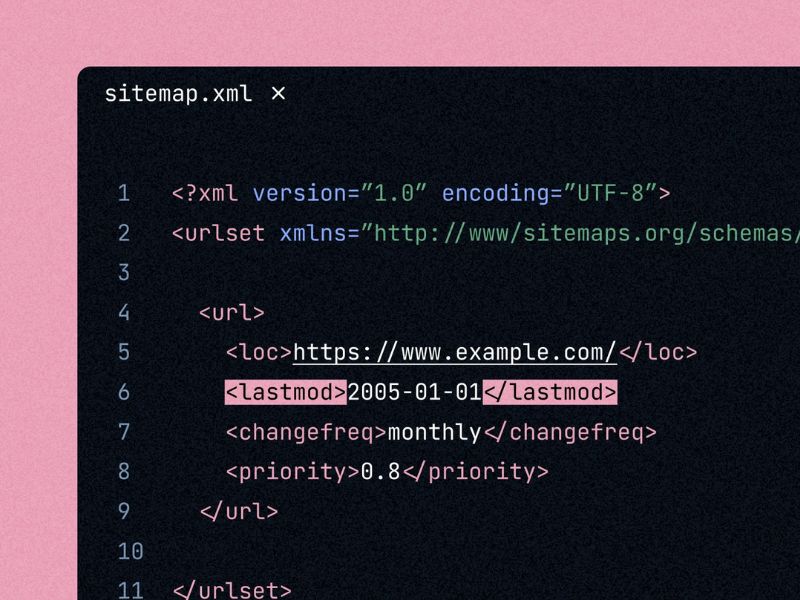
Fabrice Canel from Microsoft Bing underscores the importance of including the <lastmod> tag in your sitemap, describing it as a crucial element. Similarly, Gary Illyes from Google points out that the <lastmod> tag serves as a signal that helps search engine crawlers decide how frequently to revisit a page. This means that regularly updating the <lastmod> field in your sitemaps can lead to more efficient crawling, ensuring that search engines stay up to date with your content.
In Google’s official XML sitemap documentation, the search engine specifies that it relies on the <lastmod> tag when it is consistently accurate and verifiable. For example, Google checks the timestamp against actual changes made on the page, such as modifications to the main content, structured data, or important links. However, minor updates, like changing a copyright date, do not warrant an update to the <lastmod> value.
By keeping the <lastmod> tag current in your sitemaps, you can provide search engines with valuable information, helping them understand when significant changes are made to your content. This, in turn, can improve how effectively and efficiently your pages are crawled and indexed.
Why Do Sitemaps Matter For Your Web?
You may wonder, “Why should I worry about sitemaps when search engines can crawl my site automatically?” It’s a fair question. While it’s true that search engines can use internal links to discover content on your site, they don’t always do it perfectly. Some pages can be missed or overlooked due to complex site structures or inadequate internal linking. This is where sitemaps come in handy. They act as a guide for search engines, ensuring all important content on your site is discovered and indexed.
Boosting Search Engine Crawling Efficiency
Sitemaps play a vital role in improving search engine crawling. When your site has a complex structure or if certain pages are not linked well, search engines might overlook them. By offering a sitemap, you provide search engines with a clear, organized map of your site.
This ensures that all your pages, including those that are buried deep within the hierarchy, get crawled properly. This is especially important for websites with intricate designs where not all pages are easily accessible through internal navigation.
Prioritizing Your Most Important Pages
Sitemaps allow you to indicate which pages on your website are the most important. By doing this, you can influence how frequently search engines crawl these key pages. Important elements you might want to prioritize include:
- High-traffic landing pages
- Core product or service pages
- Cornerstone content that defines your brand
This strategic prioritization can help ensure that your most valuable content gets indexed more quickly and frequently than less critical pages.
Simplifying Crawling for Large Websites
For massive websites with hundreds or even thousands of pages, like e-commerce platforms, sitemaps are crucial. Without one, search engines may have difficulty finding all your content.
By using a sitemap, you give search engines a well-defined route, enabling them to efficiently crawl and index your website. This ensures even the most hidden product pages or blog posts are discovered and indexed, maximizing your site’s visibility in search results.
Keeping Search Engines Informed of New or Updated Content
Every time you update or add new content, a sitemap makes sure that search engines are notified right away. Instead of waiting for search engines to crawl your site randomly, a sitemap ensures your new content is quickly picked up and indexed. This is particularly useful when you’re publishing time-sensitive or seasonal content, as it can show up in search results faster.
Helping Poorly Linked Pages Get Found
If your website has pages that aren’t well-linked internally, such as pages not included in your main navigation or isolated sections with minimal connections, search engines might miss them. Thanks to sitemaps, even poorly linked pages can still be discovered and indexed. For instance, it can help with:
- Archived content that’s not linked anymore
- Special landing pages for promotions
- Deeply hidden product pages that don’t appear in navigation
This ensures all valuable content on your site, regardless of its internal links, can be found by search engines.
Types of Sitemaps Google
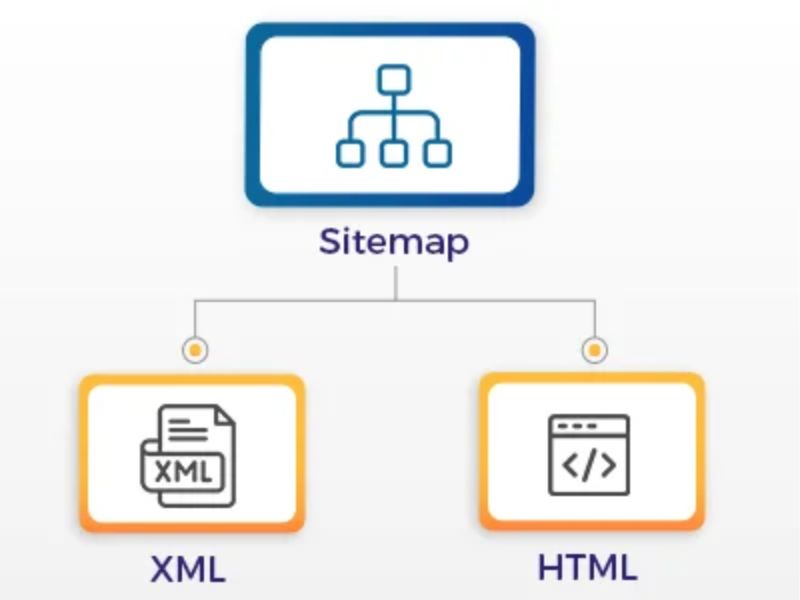
Not all sitemaps are the same, and each type serves a different purpose depending on your website’s needs. From helping search engines crawl your site efficiently to enhancing user experience, understanding the various types of sitemaps is key. Below, we break down the most common types, each with its unique functionality and advantages.
XML Sitemap
An XML sitemap is the most common and widely used type of sitemap. It is specifically designed for search engines and contains a structured list of your website’s URLs. XML sitemaps not only list URLs but also provide additional information, such as when each page was last modified, how frequently it changes, and its relative importance compared to other pages on the site.
For example, an XML sitemap might look like this:
| Code |
| <?xml version=”1.0″ encoding=”UTF-8″?> |
| <urlset xmlns=”http://www.sitemaps.org/schemas/sitemap/0.9″> |
| <url> |
| <loc>https://www.example.com/homepage/</loc> |
| <lastmod>2024-01-15</lastmod> |
| <changefreq>weekly</changefreq> |
| <priority>1.0</priority> |
| </url> |
| </urlset> |
Key features include:
- Listing URLs with structured data
- Signaling how often each page is updated
- Assigning a priority to pages, which guides search engine crawlers
XML sitemaps are invaluable for ensuring search engines can index your site fully, especially for large websites with lots of content.
HTML Sitemaps Examples
Unlike XML sitemaps, HTML sitemaps are designed for human visitors rather than search engines. They provide a user-friendly list of links to important pages on your website, making it easier for visitors to navigate, especially if your site has a complex structure.
For example, an HTML sitemap on an e-commerce site may look like this:
- Home
- Product Categories
- Clothing
- Electronics
- Home Goods
- About Us
- Contact
This type of sitemap improves user experience by giving visitors a clear roadmap to your site, which is especially useful for websites with deep structures or multiple layers of content.
RSS/Atom Feeds
RSS (Really Simple Syndication) and Atom feeds are types of dynamic sitemaps used mostly for content-heavy websites like blogs or news sites. These sitemaps are automatically updated whenever new content is published, which makes them particularly useful for websites that frequently add new posts, articles, or updates.
Some examples of when RSS/Atom sitemaps are useful:
- A news website publishing multiple articles daily
- A blog that posts new content weekly
- A podcast site that regularly adds new episodes
The automatic update feature means you don’t need to manually submit changes to search engines, saving you time and ensuring that fresh content is quickly indexed.
Video and Image Sitemaps
If your website relies heavily on multimedia, such as videos or images, you’ll benefit from using video or image sitemaps. These sitemaps help search engines like Google understand and index your media content more effectively. With video and image sitemaps, you can include metadata that describes each media file, such as its location, title, and duration (for videos).
For example, a video sitemap might look like this:
| Code |
| <?xml version=”1.0″ encoding=”UTF-8″?> |
| <urlset xmlns=”http://www.sitemaps.org/schemas/sitemap/0.9″ xmlns:video=”http://www.google.com/schemas/sitemap-video/1.1″> |
| <url> |
| <loc>https://www.example.com/video-page/</loc> |
| <video:video> |
| <video:title>Example Video</video:title> |
| <video:description>This is an example video.</video:description> |
| <video:thumbnail_loc>https://www.example.com/video-thumbnail.jpg</video:thumbnail_loc> |
| </video:video> |
| </url> |
| </urlset> |
These sitemaps are especially beneficial for:
- Video-sharing platforms that want their media content indexed
- E-commerce websites showcasing products through images and videos
- Educational or tutorial-based sites with video content
Do All Websites Need a Sitemap?
Sitemaps are a valuable tool for ensuring that search engines can locate and index all the important pages of a website. They act as a guide, helping search engines navigate your content more efficiently. However, not every website strictly needs a sitemap. Search engines like Google can still crawl and index websites without one, as they rely on internal links to discover pages.
That said, there are certain scenarios where a sitemap may not be necessary. These include:
- Single-page websites: With only one page to crawl, search engines can easily find and index all the content without the need for a sitemap.
- Small websites with infrequent updates: If your site is small and doesn’t see frequent content changes, search engines can usually keep up with the content through regular crawling.
- Private or gated-content websites: For websites that have a lot of content behind login walls or restricted access, a sitemap might not be needed, as you likely don’t want those pages indexed by search engines.
In most situations, though, creating a sitemap is a good SEO practice. It ensures that all the important content on your website is found and indexed by search engines, leaving no room for errors. Additionally, having a sitemap allows you to monitor how search engines are handling your site and its links. It can give you insights into how your content is performing in search results, providing an added layer of control over your SEO strategy.
How to Locate a Sitemaps in SEO on a Website
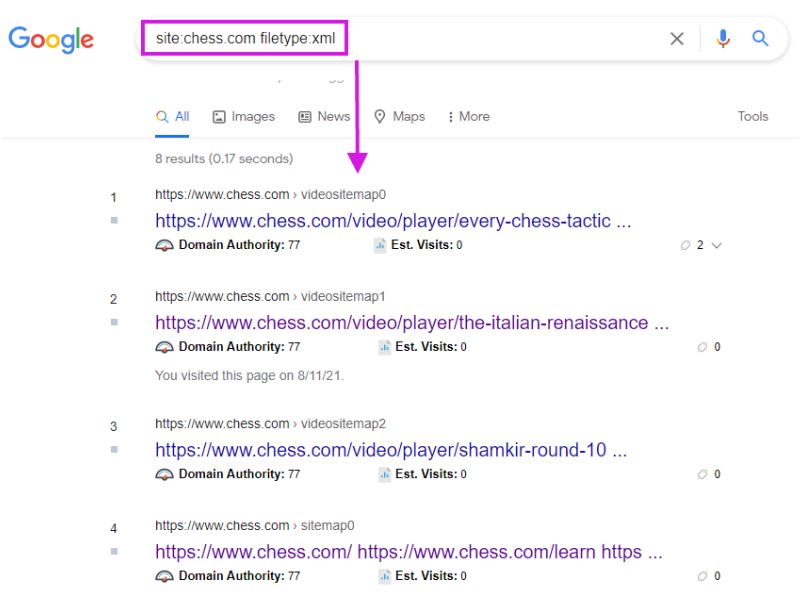
Sitemaps are essential tools that help search engines understand the structure of a website, and finding one can provide valuable insights into how a site is organized. Typically, when we refer to sitemaps in SEO, we mean XML sitemaps, which are designed specifically for search engine crawlers. Here’s how you can easily locate a sitemap on any website.
Manual Search
One of the simplest ways to find a sitemap is by manually checking the typical location where it’s hosted. Most websites store their XML sitemaps at a standard URL, which often looks like this:
- https://domain.com/sitemap.xml
In many cases, particularly for sites using platforms like WordPress with SEO plugins such as Yoast, you may be redirected to a sitemap index file, located at /sitemap_index.xml. This index file will contain links to multiple sitemaps if the website has more than one.
For example, the index file may display links like:
- Main Sitemap: /sitemap_main.xml
- Blog Sitemap: /sitemap_blog.xml
- Product Sitemap: /sitemap_products.xml
You can simply click on these links to view the actual sitemaps.
Using Search Operators
Search operators are another effective way to locate a sitemap. These are special commands you can use in search engines like Google to narrow down your results. Here are a few search operators that can help you find a sitemap:
- site:domain.com filetype:xml
- site:domain.com inurl:sitemap
- site:domain.com intitle:sitemap
Replace “domain.com” with the actual domain of the website you are searching for. The results should show the location of the sitemap if it exists and has been indexed by the search engine.
Google Search Console
If you have access to a website’s Google Search Console (GSC), locating the sitemap is straightforward. Within GSC, navigate to the “Sitemaps” section under the “Indexing” menu. Here, you’ll find a list of any sitemaps that have been previously submitted for the site. This method is particularly useful if you’re managing the website and want to ensure that search engines have the correct sitemap on file.
Checking the Robots.txt File
Another common method to find a sitemap is by looking at the website’s robots.txt file. This file tells search engines which parts of the website to crawl or ignore, and many websites include a reference to their sitemap in this file. You can access the robots.txt file by going to:
- https://domain.com/robots.txt
Within the file, search for a line that looks like this:
- Sitemap: https://domain.com/sitemap.xml
If the sitemap is linked here, you can easily access it by following the URL provided.
What If You Can’t Find the Sitemap?
If you’ve tried the methods above and still can’t find the sitemap, it’s possible the website doesn’t have one. In that case, the website owner might need to create an XML sitemap manually or use a sitemap generator tool. You can learn how to create a sitemap or generate one through various resources if the site doesn’t already have one in place.
Which Pages Should Be Included in Your XML Sitemap?
When deciding which pages to include in your XML sitemap, it’s important to consider the relevance of each URL. Ask yourself: if a visitor lands on a particular page, will it provide a good experience or valuable information? If a URL doesn’t offer much value or isn’t intended for users to find through search results, it likely shouldn’t be in your sitemap. However, leaving a URL out of your sitemap doesn’t guarantee that Google won’t index it. If Google can discover the page through internal links, it may still appear in search results. To prevent this, you need to add a “noindex” tag to such URLs.
Example: A New Blog
Let’s say you’re launching a new blog. Naturally, you’ll want to ensure that your blog posts are easy for your target audience to find in search results. In this case, including your posts in the XML sitemap is a great strategy. Most of the content on your blog will likely be relevant for visitors, making it worthy of inclusion in the sitemap. However, not every page should be there. For instance, a “thank you” page that appears after someone subscribes to your newsletter doesn’t need to show up in search results. In this case, you should exclude that specific page from the sitemap.
Handling Archive Pages
In a blog setup, you’ll probably create categories and tags to organize your posts. These categories and tags generate archive pages that list all posts associated with them. However, in the early stages of your blog, some of these archive pages may only feature one or two posts, resulting in what’s known as “thin content.” For instance, a tag archive with only one post offers limited value to visitors. Initially, it’s a good idea to exclude these pages from your sitemap until they accumulate more content. Tools like Yoast SEO make it easy to exclude all category or tag pages from your sitemap with just a few clicks.
That said, certain archive pages could hold potential for ranking in search results. If you believe a tag or category page could eventually become a valuable landing page, consider enriching it with additional information and media like images. In such cases, it’s better to keep these pages in your sitemap to help them rank better as they grow in value.
To be clear, determining which pages to include in your XML sitemap is all about assessing their relevance and potential for user engagement. This strategy ensures that only the most valuable pages are indexed by search engines, helping boost your site’s overall SEO performance.
Sitemaps Temporary Processing Error
A sitemaps temporary processing error occurs when search engines, such as Google or Bing, encounter a problem while attempting to crawl and process a website’s sitemap. This issue is generally short-term and does not necessarily indicate a long-lasting problem with the sitemap itself. These errors are often due to temporary factors, such as server downtime, connectivity issues, or search engine overload.
When this error occurs, it means the search engine wasn’t able to fully process the sitemap at that moment. However, most search engines will attempt to crawl the sitemap again after a short period, often resolving the issue without any need for intervention. In most cases, these errors are logged in tools like Google Search Console or Bing Webmaster Tools, where website owners can monitor the status of their sitemaps.
While temporary processing errors usually don’t require immediate action, it’s a good idea to keep an eye on them to ensure they don’t persist. If the error continues for an extended period, you may want to check the following:
- Ensure that your server is functioning correctly and is not experiencing downtime.
- Confirm that the sitemap is formatted properly and accessible at the correct URL.
- Verify that there are no issues with your robots.txt file that could be blocking search engines from accessing the sitemap.
Regularly checking the status of your sitemap in Google Search Console or similar tools can help you spot these temporary processing errors early and prevent them from affecting your website’s indexing.
Sitemaps in UX and Sitemaps in Figma
Sitemaps play an essential role not only in SEO but also in user experience (UX) design. In the context of UX, sitemaps help designers visualize the structure of a website or application, ensuring a logical and user-friendly flow. By mapping out the relationship between pages and how users navigate through the site, sitemaps enable UX designers to create intuitive, easy-to-navigate websites that provide a seamless experience for visitors.
Sitemaps in UX Design
In UX design, sitemaps serve as blueprints that outline the hierarchy and flow of a website. They provide a visual representation of how pages are connected, helping designers, developers, and stakeholders understand the overall structure. A well-organized sitemap improves navigation and ensures users can easily find key content, resulting in better engagement and user satisfaction. This process is especially important for complex websites with multiple categories, subpages, and content layers.
Sitemaps in UX also aid in identifying potential design problems early. For example, if users would need to click through several layers of pages to find essential information, this could signal an opportunity to simplify the structure. By addressing these issues during the sitemap creation phase, designers can streamline the user journey before any code is written or visual elements are designed.
Sitemaps in Figma
Figma, a popular design tool used by UX and UI designers, offers a flexible platform for creating sitemaps. Designers can use Figma to build sitemaps that visually communicate the structure and flow of a website or app to team members and clients. By using Figma’s collaborative tools, teams can work together in real-time to design and refine sitemaps, making the design process more efficient and transparent.
In Figma, sitemaps are typically created using frames and shapes to represent pages and connections between them. Designers can use arrows and lines to illustrate how different sections of a website are linked, creating a clear visual path of the user’s journey. This allows stakeholders to see how the site will function and ensures that the design is aligned with business and user goals from the start.
Moreover, Figma’s ability to share and comment on designs makes it easy for teams to discuss changes or adjustments directly within the sitemap. This dynamic and collaborative approach not only speeds up the design process but also ensures that every detail of the website’s structure is thoroughly planned out before moving forward with development.
How to Create a Sitemap for Your Website
Creating sitemaps is a crucial step in ensuring your website is easily navigable for both users and search engines. Whether you’re building a visual, XML, or HTML sitemap, this process helps streamline the site’s structure and ensures search engines can effectively crawl and index your pages. Here’s how you can create these different types of sitemaps:
Creating a Visual Sitemap
Before diving into XML or HTML sitemaps, it’s essential to start with a visual sitemap. A visual sitemap lays out your website’s page hierarchy and structure, helping you organize the content and understand the relationships between different pages. This step is particularly helpful in identifying which pages should be included in the XML and HTML sitemaps.
When building the visual sitemap, ensure that the most critical pages, such as your homepage, product pages, and key content sections, are included. It’s best to keep the site depth to three clicks or less for better user experience and to enhance search engine crawling.
After defining the hierarchy, you can use tools like DYNO Mapper to create a visual representation of the sitemap. Once your visual sitemap is in place, you’ll have a clear idea of how to proceed with creating the XML and HTML sitemaps.
XML Sitemap and Sitemap.xml example
XML sitemaps are primarily designed for search engines, helping them find and index your website efficiently. You can either create an XML sitemap automatically or manually, depending on your needs and the complexity of your site.
Automatic Method:
- Use a sitemap generator like Dupli Checker or XML Sitemaps Generator to create your XML sitemap. These tools will also help identify any broken links.
- Input your website’s URL into the generator, which will then create an XML file similar to this:
| Example XML Sitemap Code | |||||
|
- Download the generated XML file and upload it to your website’s root directory (often found in the public_html folder).
Manual Method:
For more control over the sitemap, you can create it manually using a plain text editor or specialized XML editor. This allows for greater customization, such as excluding certain pages or redirect links. To create a manual XML sitemap:
- Identify which URLs, images, and videos should be included.
- Create an XML file using appropriate tags, such as <loc> for URLs, <lastmod> for the last update date, and <changefreq> for change frequency.
Once complete, upload the XML file to your site’s root directory.
Creating an HTML Sitemap
HTML sitemaps are designed for website visitors, providing a structured list of pages to help users navigate your site more easily. Just like XML sitemaps, you can create HTML sitemaps automatically or manually.
Automatic Method:
Many website-building platforms automatically generate HTML sitemaps. For example, Hostinger Website Builder generates one by default when you launch your site, while WordPress users can rely on plugins like Yoast SEO to create and manage sitemaps.
Manual Method:
To manually create an HTML sitemap:
- Start by listing the essential pages from your visual sitemap.
- Create an HTML page using a text or HTML editor. Here’s an example of what the code might look like:
| Example HTML Sitemap Code |
| <!DOCTYPE html>
<html lang=”en”> <head><meta charset=”UTF-8″><title>Sitemap</title></head> <body><h1>Website Sitemap</h1><h2>Main Sections</h2><ul> <li><a href=”/home”>Home</a></li> <li><a href=”/about”>About Us</a></li> <li><a href=”/services”>Services</a><ul> <li><a href=”/services/design”>Design Services</a></li> <li><a href=”/services/consulting”>Consulting Services</a></li> </ul></li><li><a href=”/blog”>Blog</a></li> <li><a href=”/contact”>Contact</a></li></ul> <h2>Additional Resources</h2><ul> <li><a href=”/privacy-policy”>Privacy Policy</a></li> <li><a href=”/terms”>Terms and Conditions</a></li></ul> </body></html> |
This code provides a basic structure with <h1> and <h2> tags for headings and <ul> and <li> tags for unordered lists of links. Once the HTML file is created, upload it to your server, making it accessible for visitors to view and navigate.
How to Submit Your Sitemap to Search Engines
Submitting your sitemap to search engines is a crucial step in ensuring they can efficiently crawl and understand the structure of your website. By doing this, you enhance the chances of your pages being indexed and improving their visibility in search engine results. Let’s walk through the process of submitting your sitemap to Google via Google Search Console (GSC).
Steps to Submit Your Sitemap in Google Search Console
- Create a Google Search Console Account
If you don’t already have a Google Search Console account, you’ll need to set one up. This tool is essential for managing your website’s presence on Google. - Add Your Website
After creating your account, add your website to Google Search Console by verifying your ownership of the domain. Once this is done, you’re ready to submit your sitemap. - Navigate to the Sitemaps Section
On the left-hand navigation bar in GSC, you’ll see an option called “Sitemaps.” Click on it to access the section where you’ll be able to submit your sitemap. - Enter Your Sitemap URL
In the “Add a new sitemap” section, type the URL of your sitemap. This is usually something like https://www.yourwebsite.com/sitemap.xml. To confirm the correct URL, try entering it into your browser’s address bar and checking if it leads to your XML sitemap. - Submit Your Sitemap
Once you’ve entered the sitemap URL, click the “Submit” button. If the submission is successful, you will receive a confirmation message. You can then check the “Submitted sitemaps” section to ensure your sitemap was processed correctly. Look for a message that says “Sitemap index processed successfully.”
Important Notes
- Sitemap Size Limitations: Keep in mind that Google limits sitemaps to 50,000 URLs and 50 MB in size. If your sitemap exceeds these limits, you’ll need to create multiple sitemap files and submit them separately.
By submitting your sitemap to Google, you give search engines the roadmap they need to crawl and index your website efficiently, improving the chances of your content being discovered by users.
Best Practices for Sitemaps
Optimizing your sitemaps is essential for ensuring that search engines can crawl and index your site effectively. Following best practices can help you identify errors, fix issues, and enhance your site’s visibility. Below are some key practices for making the most of your sitemap.
Use the Sitemap Report to Spot Errors
Once you’ve submitted your sitemap to Google, it’s important to monitor it using the “Submitted Sitemaps” section in Google Search Console. If you see a message like “Sitemap index processed successfully,” this means Google has successfully crawled your sitemap.
You can gain more insight by clicking on the “See Page Indexing” option. This report shows how many of your pages were successfully indexed and provides details on why certain pages were not indexed. For example, if you see pages marked with the “Page with redirect” error, it means these pages are redirecting to other URLs, which could be intentional or require further investigation.
In some cases, these redirects are purposeful, such as when old pages are redirected to updated versions or more relevant URLs. However, if the redirects were not intended, it’s worth checking to ensure that everything is functioning correctly. By regularly reviewing these reports, you can address issues quickly and make sure the sitemap is working as intended.
Use Sitemaps to Diagnose Indexing Problems
Sitemaps can also help you diagnose indexing issues. By comparing the number of pages in your sitemap with the number of pages indexed by Google, you can get a clearer picture of potential problems. For example, if your sitemap includes 5,000 pages but only 2,000 of them are indexed, it could indicate issues such as:
- Duplicate content: Google may choose not to index duplicate or low-quality content.
- Crawl budget limitations: If your website exceeds its crawl budget, Google may not index all your pages.
By analyzing these discrepancies, you can take steps to resolve them and improve your site’s overall indexability.
Align Your Sitemaps and Robots.txt
It’s crucial that your sitemaps and robots.txt file work together cohesively. If a page is blocked by your robots.txt file or contains a “noindex” tag, it should not appear in your sitemap. Sending conflicting signals to search engines can confuse crawlers. For instance, if a page appears in your sitemap, you’re essentially telling Google that it’s important, but if that same page is blocked in robots.txt, it won’t be crawled, leading to mixed messages.
To avoid these issues, ensure that your sitemap only includes pages that are meant to be indexed. Double-check that your robots.txt file and sitemap are properly aligned to avoid any potential confusion for search engines. This step can prevent unnecessary indexing issues and ensure that your most important pages are prioritized.
Pro Tips for Your Sitemaps
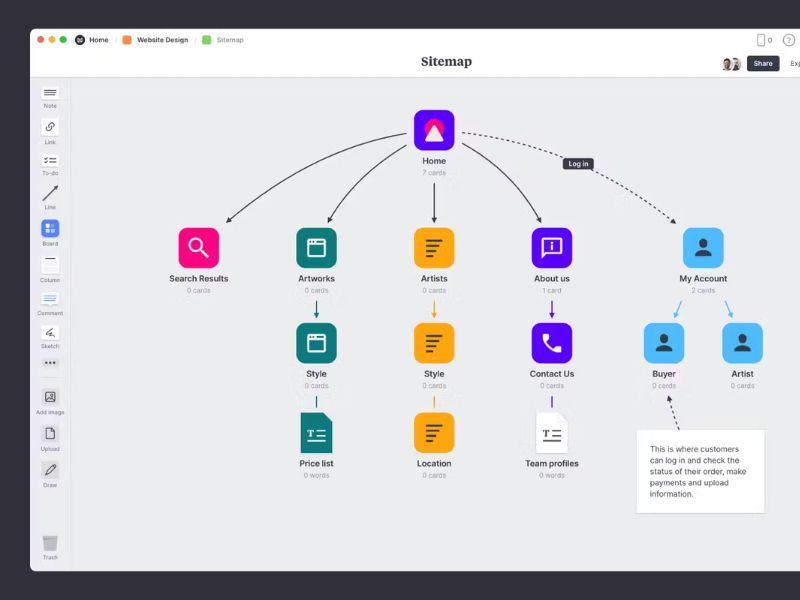
Sitemaps are a critical part of helping search engines navigate and index your website effectively. However, there are several best practices that can enhance how sitemaps function, especially if you manage a large or complex site. Below are some pro tips to ensure you’re making the most of your sitemaps.
Break Up Large Sites Into Smaller Sitemaps
If your website contains thousands of pages, you should know that sitemaps have a limit of 50,000 URLs per file. Google recommends breaking your sitemap into smaller, more manageable sitemaps if you run a large site. This not only keeps you within the technical limits but can also make it easier for search engines to crawl and index your content efficiently. By dividing your site into sections, such as product categories or blog sections, you can ensure that each part of your website gets the attention it deserves.
Handle “Last Modified” Dates Carefully
Each URL in your sitemap is associated with a “last modified” date, which tells search engines when the page was last updated. It’s important to only update this date when you make significant changes to the content on that page. Google warns that constantly updating the “last modified” date without actual changes could be interpreted as a spammy tactic. For example, only change the date when you’ve added new content, made significant revisions, or updated the page’s structure.
Video Sitemaps vs. Video Schema
Video sitemaps were once essential for websites with multimedia content, but they’ve become less critical due to the rise of Video Schema. Video Schema has largely taken over the role of informing search engines about your video content, making video sitemaps somewhat redundant. While a video sitemap won’t hurt your SEO, it’s often not worth the extra effort. Focusing on properly implementing Video Schema will usually be enough to ensure your videos get the attention they need from search engines.
Keep Sitemaps Under 50MB
Both Google and Bing allow sitemaps up to a size of 50MB. If your sitemap exceeds this size, you’ll need to split it into smaller files. Fortunately, most websites fall well below this limit, so as long as you stay under 50MB, your sitemap should be fine.
HTML Sitemaps for Users
While XML sitemaps are designed for search engines, HTML sitemaps serve human visitors. Although they are no longer as crucial for SEO as they once were, an HTML sitemap can still improve the user experience by providing a clear overview of your website’s structure. If you think it would help your visitors navigate your site more easily, adding an HTML sitemap won’t harm your SEO efforts, though search engines primarily rely on XML sitemaps today.
Incorporating these pro tips can help you make the most out of your sitemaps, ensuring that search engines can effectively crawl and index your content while also enhancing user experience when necessary.
Tips for Optimizing Your Sitemaps
Optimizing your sitemaps can significantly improve the way search engines crawl and index your website. By ensuring your sitemap is structured properly and includes all relevant URLs, you increase your chances of better SEO performance. Here are some key tips for optimizing sitemaps effectively.
Use XML Files to Structure Internal Links and External URLs
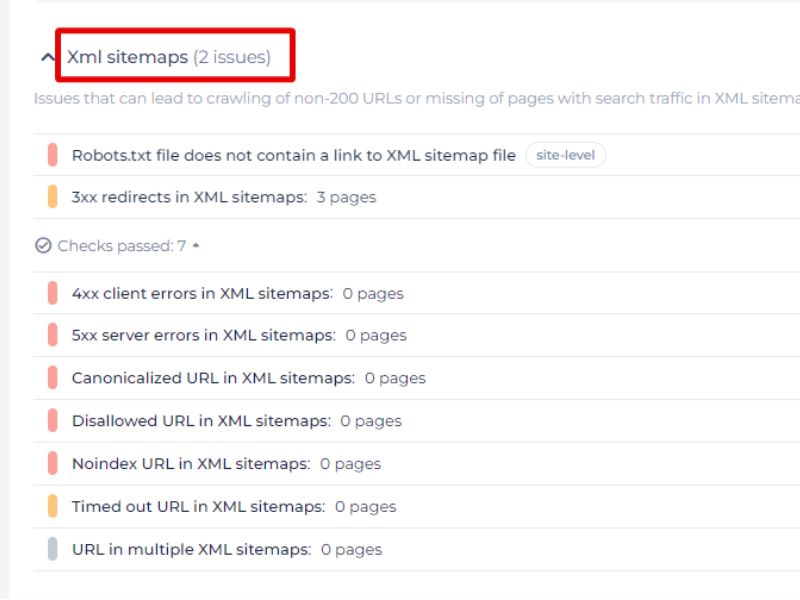
An XML sitemap serves as a roadmap for search engine crawlers, guiding them through the URLs of your website. By incorporating both internal and external links into your sitemap, you inform search engines about which pages are crucial. This structured approach also helps to prevent orphan pages—those pages without any internal links—which may otherwise go unnoticed by search engines. Although including a page in your sitemap doesn’t guarantee that it will be indexed, it greatly increases the likelihood of it being discovered and crawled, which boosts your overall site indexability.
Keep the Root Directory Clean and Organized
The root directory is the central hub for storing all the important files and folders that make up your website. While it’s technically possible to store your sitemap outside of the root directory, doing so is not recommended. Search engines typically expect to find the sitemap within the root directory, and its location can influence which files are included. Keeping the root directory clean and free of unnecessary files can help ensure your website remains responsive and efficient, leading to better user experience and faster crawling by search engines.
Include All Web Pages in Your Sitemap
To maximize the effectiveness of your sitemap, be sure to include all essential pages from your website. Sitemaps are especially useful for guiding search engines to web pages that may not be well linked internally. Even if your internal linking is less than ideal, a complete sitemap ensures that no important page goes unnoticed. By listing all relevant URLs in your sitemap, you create a direct pathway for search engine bots to access and index your entire website, enhancing communication with search engines and improving the visibility of your content.
Sitemap URL
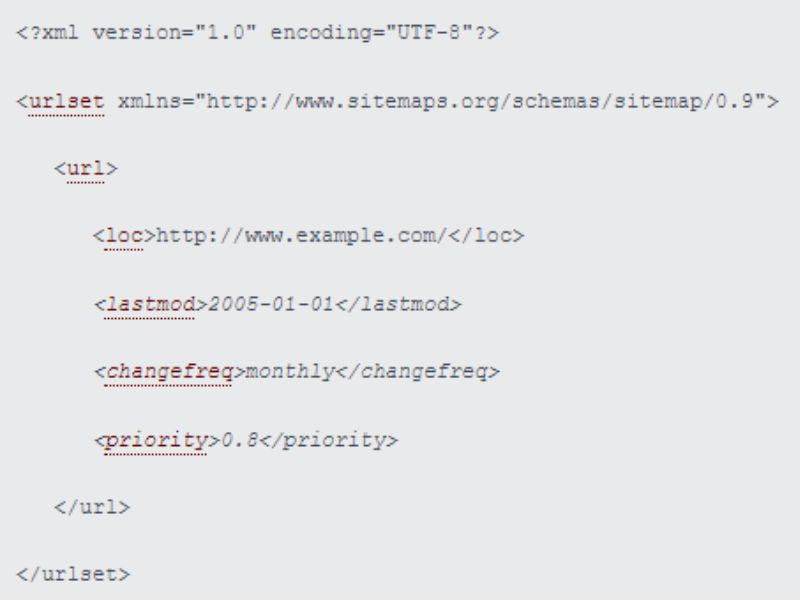
The sitemap URL is the specific address where your website’s sitemap is located, providing search engines with the pathway to crawl and index your content. This URL typically follows a standard format and is essential for ensuring that search engines like Google and Bing can easily access and read your sitemap file.
A sitemap URL often looks like this:
https://www.yourwebsite.com/sitemap.xml
This URL is usually placed in the root directory of your website, allowing search engines to find it quickly. For websites using platforms like WordPress, sitemap URLs may differ slightly based on plugins like Yoast SEO, which often generate a sitemap index file at a URL like:
https://www.yourwebsite.com/sitemap_index.xml
Sitemaps Generator
A sitemaps generator is a tool designed to automatically create a sitemap for your website, simplifying the process of building and maintaining an accurate map of your site’s structure. Sitemaps are essential for SEO as they help search engines like Google and Bing crawl and index your website more efficiently. For many site owners, manually creating a sitemap can be time-consuming, especially for large websites. This is where a sitemaps generator becomes invaluable, providing a quick and easy way to generate sitemaps without needing extensive technical knowledge.
Top 3 Google Sitemap Generator you should know
Creating a sitemap is essential for ensuring that search engines can effectively crawl and index your website. Luckily, you don’t need to be an expert coder to generate a sitemap. There are several tools available that make the process quick and easy. Below are the top 3 sitemap generators that can help you create XML sitemaps for your website, improving your site’s SEO and search engine visibility.
XML-sitemaps.com
One of the most popular tools for creating sitemaps, XML-sitemaps.com, offers a simple and user-friendly experience for both beginners and advanced users. This free tool allows you to quickly generate a sitemap for small websites (up to 500 pages) by simply entering your website’s URL. For larger websites or additional features like scheduling automatic updates, you can upgrade to the paid version.
Key features include:
- Generates XML, text, and HTML sitemaps
- Allows for easy customization of priority and update frequency for each page
- Provides a detailed report of broken links and other errors
With its straightforward interface and helpful features, XML-sitemaps.com is a great choice for those looking to generate a sitemap quickly and efficiently.
Screaming Frog SEO Spider
Screaming Frog SEO Spider is a more advanced tool, offering a comprehensive approach to generating sitemaps and auditing your website. This desktop application crawls your website just like a search engine, gathering data that helps you not only create an XML sitemap but also identify SEO issues.
Key features include:
- Generates customizable XML sitemaps based on your specific needs
- Crawls websites for up to 500 URLs for free (larger websites require a paid license)
- Helps identify broken links, duplicate content, and missing meta descriptions
Screaming Frog is perfect for SEO professionals or website owners who need an in-depth audit of their website along with a sitemap generator.
Yoast SEO Plugin
For WordPress users, the Yoast SEO Plugin is one of the easiest ways to generate an XML sitemap without the need for a separate tool. Yoast automatically generates a sitemap for your WordPress website and updates it whenever you add new content or make changes. This plugin is particularly useful for those looking to optimize their SEO efforts across multiple areas.
Key features include:
- Automatic XML sitemap generation and updates
- Built-in SEO recommendations for pages and posts
- Easy integration with Google Search Console for sitemap submission
Yoast SEO is ideal for WordPress website owners who want an all-in-one solution for optimizing their site’s SEO, including easy sitemap generation and management.
Should You Use a Sitemaps Checker?
Yes, using a sitemap checker is a valuable practice to ensure your sitemap is functioning as intended. A sitemap checker helps you verify that your sitemap is properly formatted, accessible to search engines, and free from errors. It also allows you to identify potential issues like broken links, missing pages, or incorrect URL structures that could prevent search engines from effectively crawling and indexing your website.
By regularly using a sitemap checker, you can maintain the health of your sitemap, ensuring that all critical pages are discoverable by search engines. This can ultimately improve your website’s SEO performance and ensure that your content is visible to a larger audience.
What to Exclude from Your Sitemaps
To maximize the effectiveness of your sitemaps, it’s essential to include only the pages that are SEO-relevant. This ensures that search engines can allocate their crawl budget efficiently, focusing on the most valuable pages for indexing and ranking. By excluding unnecessary or non-SEO-friendly pages, you can improve your site’s overall performance and visibility in search results.
Here are 10 types of pages you should consider excluding from your sitemaps:
- Duplicate Pages
Including duplicate content in your sitemap can confuse search engines and lead to poor rankings. Make sure only one version of any page is included to avoid duplication.
- Paginated Pages
These pages are often used for splitting content across multiple pages, but they generally don’t need to be indexed separately in your sitemap, as they don’t serve as standalone content.
- Non-Canonical Pages
Non-canonical pages are alternate versions of a page. Since canonical pages are the preferred version, only these should be included in the sitemap to avoid duplicate content issues.
- Archive Pages
Archive pages, such as those generated by blog categories or date-based filters, typically don’t offer enough unique content for search engines to index, making them better suited for exclusion.
- Redirected, Missing, and Error Pages (3xx, 4xx, 5xx)
Pages that have been redirected (3xx), are missing (4xx), or have server errors (5xx) should not appear in your sitemap. These pages provide no value to search engines and may cause crawling issues.
- Comment URLs
URLs that lead to individual comments or discussions are not valuable from an SEO perspective and should be left out of your sitemap.
- No-Index Pages
If you’ve already added a “noindex” tag to a page, indicating that you don’t want it to appear in search results, there’s no need to include it in your sitemap.
- Resource Pages
While some resource pages might be useful to site visitors, they don’t always serve as landing pages. If these pages aren’t optimized for search engine visibility, it’s best to leave them out.
- Site Search Results Pages
Pages that display internal search results should not be included in your sitemap, as they offer little SEO value and can lead to thin content or duplicate results.
- Shared via Email Pages
Pages that exist solely for content shared via email links are not necessary for search engines to index and should be excluded from the sitemap.
Should You Use Sitemaps For Your Websites in 2024?
Yes, using sitemaps for your website in 2024 is still highly recommended. Sitemaps remain a crucial tool for helping search engines like Google and Bing efficiently crawl and index your web pages. As websites grow in complexity and size, sitemaps provide a clear pathway for search engine bots, ensuring that all important pages—especially those that might be buried deep within the site structure—are easily discoverable.
In 2024, with search engines continuing to prioritize user experience and content relevance, sitemaps also help ensure that your latest content is indexed quickly and accurately. Whether you’re running a large e-commerce site, a content-heavy blog, or a small business website, a well-structured sitemap enhances your visibility in search results and can boost your overall SEO efforts.
Sitemaps – Frequently Asked Questions
How Can I Locate My Sitemap URL?
You can usually find your sitemap URL by typing /sitemap.xml at the end of your domain name, such as https://www.yourwebsite.com/sitemap.xml. If your site uses plugins or content management systems like WordPress, the sitemap may be located at /sitemap_index.xml. Alternatively, you can check your Google Search Console for the submitted sitemap URL.
Does Having a Sitemap Boost SEO?
Yes, a sitemap is important for SEO. It helps search engines understand the structure of your site and ensures that all your important pages are crawled and indexed. While a sitemap doesn’t directly improve rankings, it enhances indexation, which can improve your site’s visibility in search results.
Is a Sitemap Necessary for My Website?
Most websites can benefit from having a sitemap, especially larger sites with complex structures or those that frequently add new content. Small, simple sites may not require one, but even then, having a sitemap ensures better visibility for search engines.
How Can I Tell if a Website Has a Sitemap?
To check if a website has a sitemap, try typing /sitemap.xml after the website’s domain in your browser. Alternatively, use Google Search Console or tools like Screaming Frog to discover if a sitemap has been submitted and indexed.
Do I Need to Regularly Update My Sitemap?
You should update your sitemap whenever you add, remove, or significantly change content on your website. If your website frequently updates content, automating the process through a plugin or CMS is a good idea to ensure search engines have the latest version.
What Is the Maximum Size for a Sitemap?
A sitemap should not exceed 50,000 URLs or 50 MB in size. If your website has more than 50,000 URLs, you will need to create multiple sitemaps and submit a sitemap index file to keep it within the size limits set by Google and Bing.
How Often Should You Generate a Sitemap?
Sitemaps should be generated whenever there are significant changes to your website, such as new pages, updates to existing content, or major structural adjustments. For frequently updated sites, automating sitemap generation ensures search engines always have the latest version.
Conclusion
Sitemaps are truly the unsung heroes of the SEO world. While they may not always be in the spotlight, without them, your website’s valuable content could easily go unnoticed by search engines. Whether you’re managing a small blog or a large e-commerce site, a well-structured sitemap is key to ensuring that your important pages receive the attention they deserve.
If you haven’t created a sitemap yet, now is the ideal time to get started! By implementing one, you’ll help search engines discover and index your best content. At OctopusWriters, we understand the importance of effective sitemaps in boosting your site’s visibility, and we’re here to guide you in optimizing your SEO strategy. Let us find your top content with ease!

